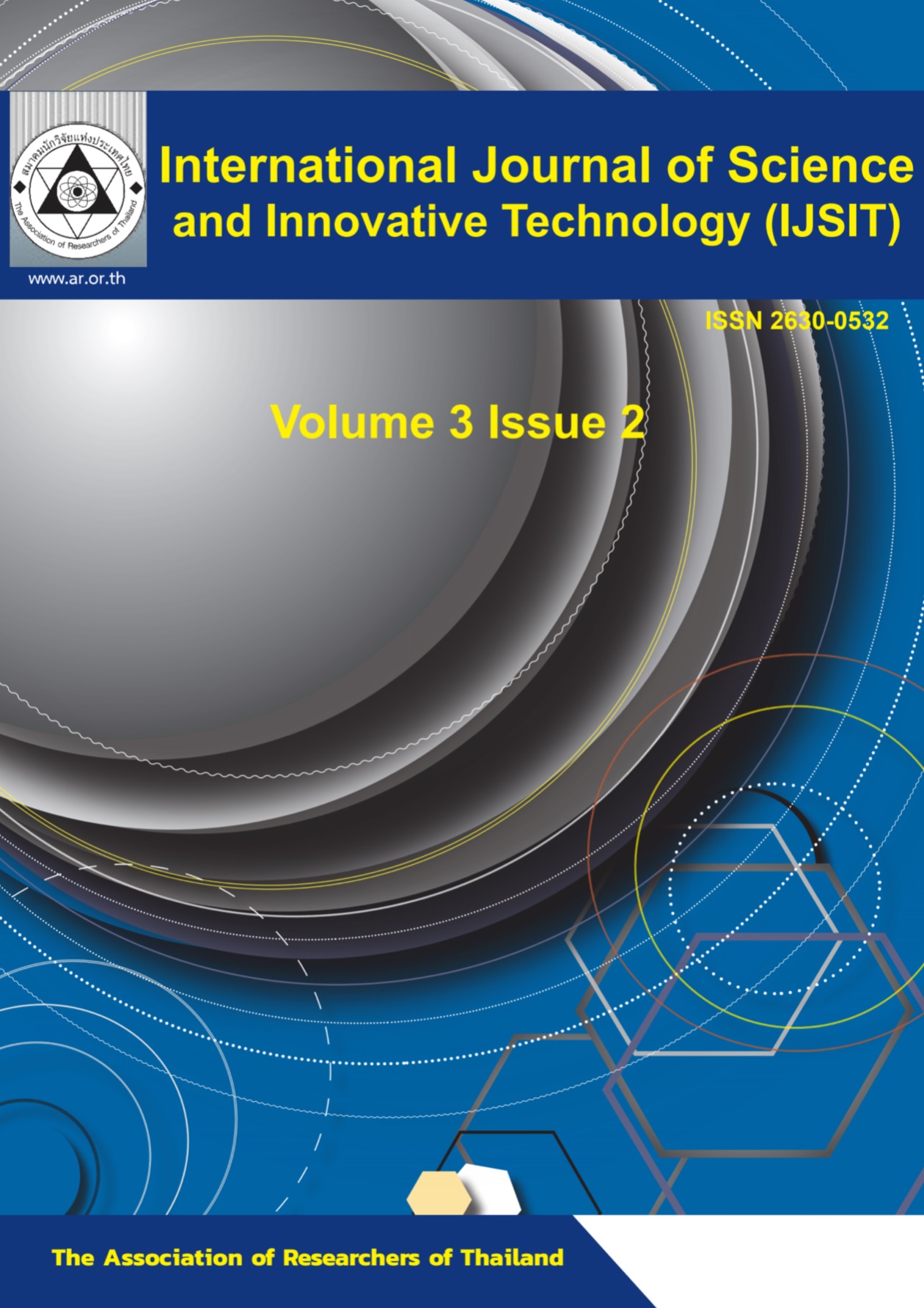Development of Drying Process Combining Hot Air with Drying Cyclone for High Moisture Content Materials
Main Article Content
Abstract
This research presented the drying method which combined flowing hot air with drying cyclone for continuous production process development. Drying products are focused on the crushed durian peel to use as raw material in Carboxymethyl cellulose production and shredded coconut to offer alternative method instead the conventional production, which roasted by hot pan. An experimental was conducted from designed and fabricated drying process system, which employed centrifugal blower to generate air flow and electric heater as a heat source. Continuous feeding rate of fresh durian peel and coconut was maintained at 200 g/min, and 15 rounds of feeding have been tested. Air temperatures at 70ºC, 80ºC, and 90ºC and air velocities at 25.7 m/s, 32 m/s, and 38 m/s were tested. Experimental results founded that air temperature enhancement had more influenced on the rounds feeding than those air velocity factor. For temperature at 90ºC and velocity at 38 m/s, drying rate represented the highest value. All experimental results could be concluded that the proposed development method that employed hot air with drying cyclone had an ability to dry the durian peel and to roast coconut as continuous production instead the convention method.
Article Details
References
Petpradub, N. (2018). Profitability Analysis of Coconut Products to Invest in Product development A Case Study of Arman Community Enterprise, A Processed Coconut Entrepreneur Group in Khok Kian Sub-District, Narathiwat Province. Princess of Naradhiwas University Journal of Humanities and Social Science, 5(2), 87-95. (in Thai)
Phosee, N., Khongbutr P, Uttamating K., & Assawarachan, R. (2013). Effect of temperature on moisture ratio and color changes of mint leaves during hot air drying process, RMUTSB ACADEMIC JOURNAL, 1(2), 103-114. (in Thai)
Pintana, P., Thanompongchart P., Phimphilai, K., & Tippayawong, N. (2016). Combined effect of air temperature and velocity on drying of Thai rice cracker. KKU ENGINEERING JOURNAL, 43(S2), 244-246.
Wisaiprom, N., Kadsayapanand, N., & Palasai, W. (2018). The Comparative Study of Shrimp Drying Process with Low Humidity Air and Hot Air Drying. Princess of Naradhiwas University Journal, 11(1), 83-94. (in Thai)
Castilho, L. R., & Medronho R. A. (1999). A Simple Procedure for Design and Performance Prediction of Bradley and Rietema Hydrocyclones. Minerals Engineering, 13(2), 183-191.


